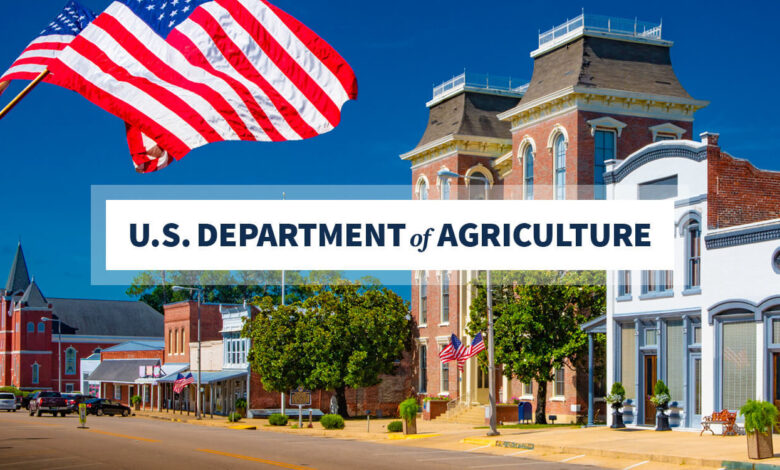Agriculture Secretary Vilsack Visits Arizona to Highlight Biden-Harris Administration Investments in Wildfire Resilience and Rural Prosperity

Marana, ARIZONA, September 12, 2024 – U.S. Agriculture Secretary Tom Vilsack today visited two communities in Arizona to highlight U.S. Department of Agriculture (USDA) investments that protect communities and natural resources from wildfire and drought, expand access to clean energy and create jobs, and build stronger, more resilient communities.
“The Biden-Harris Administration understands that Western states like Arizona face unique challenges related to our changing climate,” said Secretary Vilsack. “We are investing historic resources in innovative solutions to help Arizona communities reduce wildfire risk and adapt in the face of drought. At the same time, we are looking to the future by investing in clean energy infrastructure, creating new jobs, and building prosperity in rural communities.”
In Marana, Secretary Vilsack hosted an Investing in America Town Hall at Trico Electric Cooperative that was attended by 150 Arizonans. During the event, Secretary Vilsack highlighted last week’s announcement of $7.3 billion in financing for rural electric cooperatives to build clean energy for rural communities across the country through the Empowering Rural America (New ERA) Program. Funded by President Biden’s Inflation Reduction Act, the investment is the largest in rural electrification since 1936.
As part of this financing, Arizona Electric Power Cooperative (AEPCO) has been selected to receive approximately $485 million to transform their power portfolio with large-scale investments in renewable power and energy storage throughout Arizona and the Southwest. These projects will reduce pollution by more than 1 million tons in carbon dioxide emissions without sacrificing electricity reliability or affordability. AEPCO also expects to expand consumer-based energy efficiency in rural communities and establish agrivoltaic educational programs so farmers can also benefit from clean energy projects.
Ultimately, AEPCO’s projects will enable over $3 billion of investment, benefiting approximately 40 electric cooperatives and public power utilities across the Southwest. This investment will also create approximately 600 new jobs during construction, and 30 new long-term jobs through local worker retraining and by establishing a renewable jobs apprenticeship program with the International Brotherhood of Electrical Workers and local community colleges.
Additionally, Secretary Vilsack highlighted other clean energy investments made through USDA Rural Development programs:
- Powering Affordable Clean Energy (PACE): Thanks to funding from the Inflation Reduction Act, USDA has funded two PACE projects in Arizona that make clean, affordable, and reliable energy accessible to rural communities. Trico Electric Cooperative received $83.5 million to expand its battery energy storage system capacity and provide reliable electricity to the growing number of people living in the surrounding areas of Tucson and the Pascua Yaqui Reservation, and Sierra Southwest Electric Cooperative received $55.2 million to finance three battery energy storage system projects totaling 35 megawatts.
- Rural Energy for America Program (REAP): Since the start of the Biden-Harris Administration, USDA has invested $57.6 million through REAP in 50 renewable energy and energy efficiency projects that help rural business owners in Arizona lower energy costs, generate new income, and strengthen their resiliency of operations.
This morning in Tempe, Secretary Vilsack joined Phoenix Mayor Kate Gallego and local stakeholders at Salt River Project for a roundtable to hear firsthand from those who have experienced the devastating impacts of extreme heart, wildfire, long-term drought and water scarcity. During the roundtable, the Secretary highlighted several investments made to increase wildfire resilience and water savings in Western states, including Arizona.
- Wildfire Crisis Strategy: Under the Biden-Harris Administration, USDA’s Forest Service launched the Wildfire Crisis Strategy to target resources where wildfire risk poses the most immediate threat to communities, critical infrastructure, and natural resources. With three priority landscapes in Arizona, the strategy is mitigating risk to 86 at-risk communities through funding from the Bipartisan Infrastructure Law and Inflation Reduction Act, which provided $247 million in funding to implement risk reduction activities in Arizona.
- Community Wildfire Defense Grants: Communities in Arizona have also received more than $7 million in Bipartisan Infrastructure Law funding through the Community Wildfire Defense Grant (CWDG) program to support local partners in planning and implementation of hazardous fuels work on state and private lands.
- Water-Saving Commodities: In August, USDA announced it will invest $400 million with at least 18 irrigation districts, including two in Arizona, to help farmers across the West conserve water and build drought resilience, while maintaining and creating market opportunities. The Central Arizona Irrigation and Drainage District in Elroy, AZ, and Maricopa-Stanfield Irrigation and Drainage District in Maricopa, AZ, will receive up to $15 million each to work with producers and expand usage of innovative water savings technologies and farming practices while producing water-saving commodities in the face of continued drought.
- Western Water Framework: USDA’s Natural Resources Conservation Service (NRCS) is helping producers and communities conserve water in Arizona and 16 other Western states manage and prepare for the effects of climate change and build drought resilience through the Western Water and Working Lands Framework for Conservation Action (Western Water Framework), which was launched in 2023. The Western Water Framework includes key NRCS conservation programs to target investments, including the Environmental Quality Incentives Program (EQIP), Conservation Stewardship Program (CSP), Agricultural Conservation Easement Program (ACEP), and Regional Conservation Partnership Program (RCPP).
USDA touches the lives of all Americans each day in so many positive ways. In the Biden-Harris Administration, USDA is transforming America’s food system with a greater focus on more resilient local and regional food production, fairer markets for all producers, ensuring access to safe, healthy and nutritious food in all communities, building new markets and streams of income for farmers and producers using climate smart food and forestry practices, making historic investments in infrastructure and clean energy capabilities in rural America, and committing to equity across the Department by removing systemic barriers and building a workforce more representative of America. To learn more, visit www.usda.gov.
#
USDA is an equal opportunity provider, employer, and lender.


